Key Takeaways
- Tick-borne diseases like Lyme disease and RMSF are increasing in the U.S.
- Early detection and prompt medical care significantly improve treatment outcomes.
- Preventive measures such as proper clothing, repellents, regular tick checks, and yard maintenance drastically reduce tick bite risks.
- Proper tick removal techniques are essential in minimizing disease transmission risks.
- Awareness and early medical intervention are crucial if symptoms appear after a tick bite.
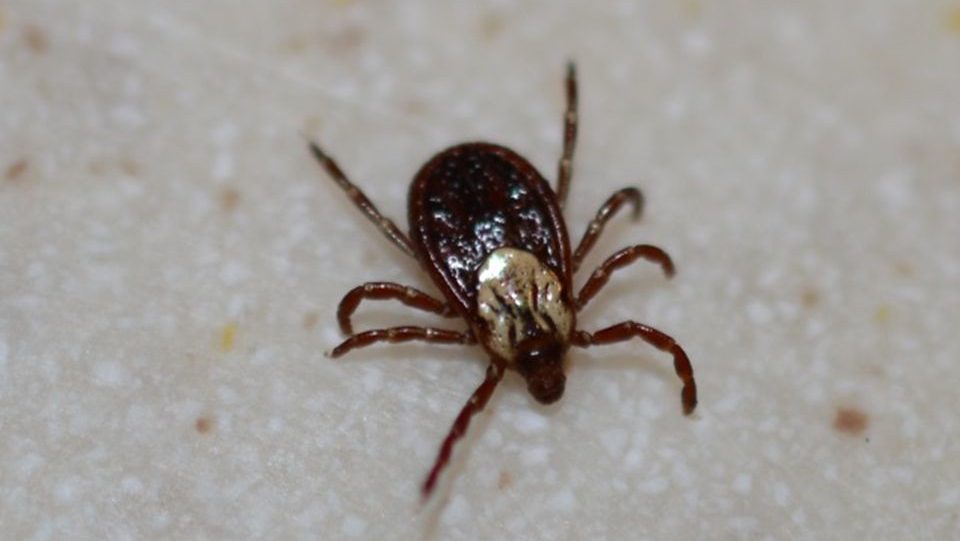 Ticks may look small and harmless, but these small parasites pose a significant health threat to families across the United States. From wooded trails to grass backyard, ticks are quietly hidden, ready to latch unheard hosts. It is important to understand tick-related fever and diseases to protect your loved ones.
Here is your widespread guide to identify, prevent and respond to tick-related diseases.
Ticks may look small and harmless, but these small parasites pose a significant health threat to families across the United States. From wooded trails to grass backyard, ticks are quietly hidden, ready to latch unheard hosts. It is important to understand tick-related fever and diseases to protect your loved ones.
Here is your widespread guide to identify, prevent and respond to tick-related diseases.
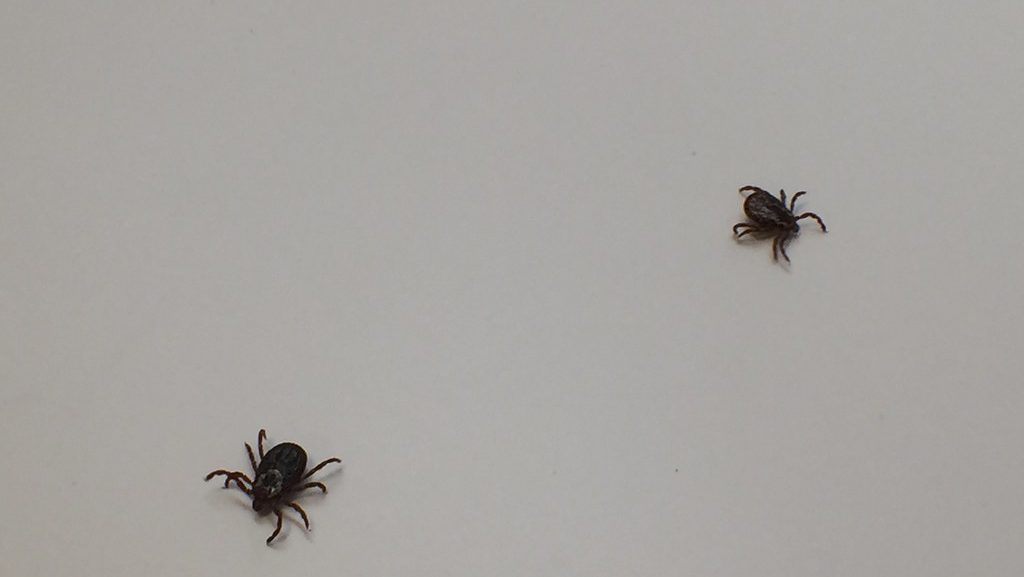

Not getting a solution?
Get your free pest control estimate today!Why Ticks Are a Growing Concern
Tick populations are on the rise across the U.S., partly due to warmer climates, expanding suburban development, and increased interactions between wildlife and humans. According to the CDC, tick-borne illnesses have doubled in recent years, surpassing 50,000 reported cases annually. Unfortunately, many tick bites go unnoticed until symptoms develop, underscoring the importance of awareness, prevention, and regular checks after outdoor activities. Ticks are especially problematic due to their ability to carry multiple pathogens at once, increasing the risk of co-infections that complicate treatment. With tick habitats expanding into urban and suburban environments, more households than ever are at risk.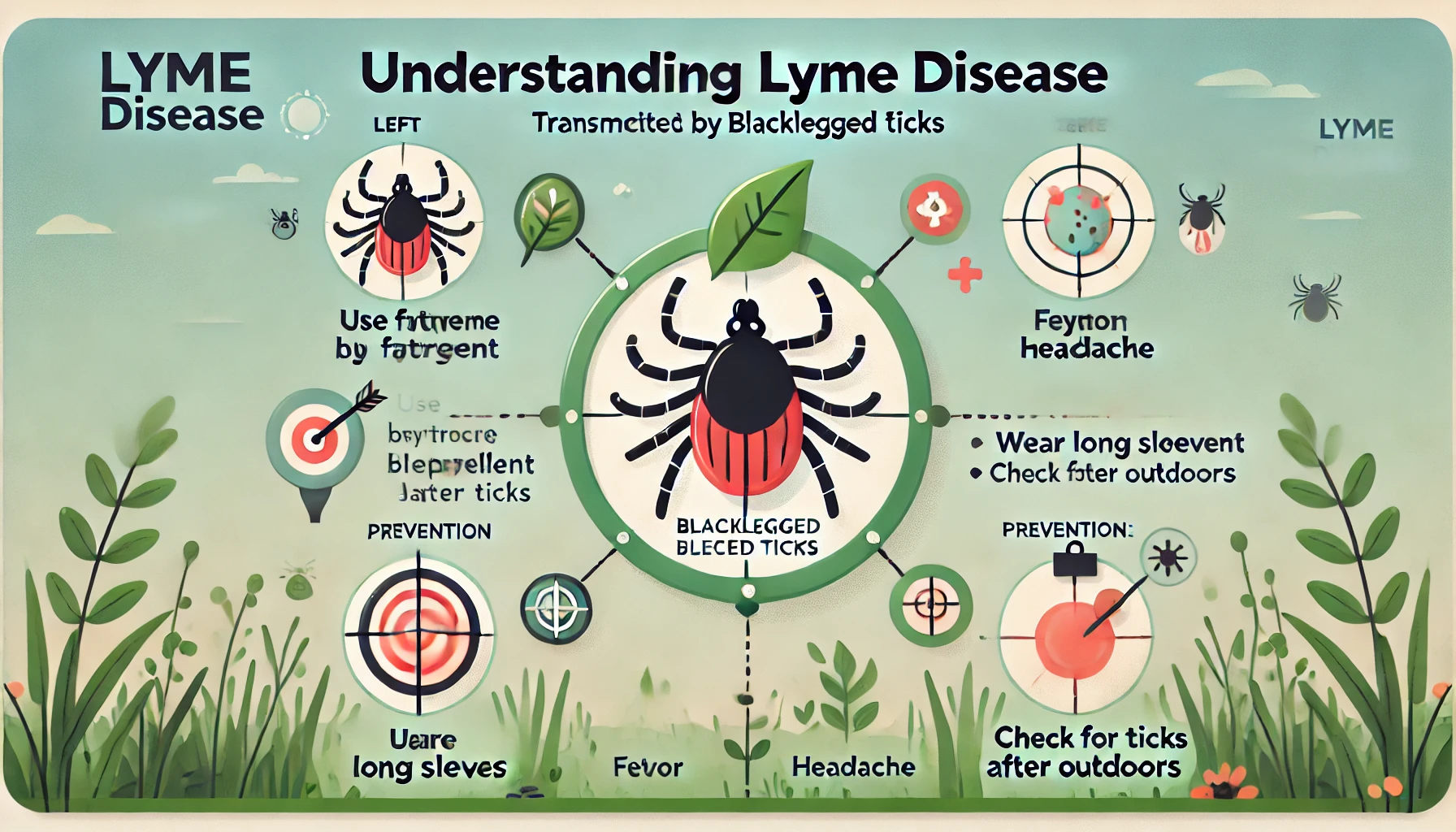
Common Tick-Borne Diseases in the U.S.
Ticks carry a variety of diseases, but some are particularly common and concerning for families: Lyme Disease Lyme disease is America’s most prevalent tick-borne illness, particularly in the Northeast and Midwest. Caused by bacteria spread by the black-legged tick (deer tick), Lyme disease often starts with symptoms like:- A characteristic “bull’s-eye” rash
- Fever and chills
- Headache and fatigue
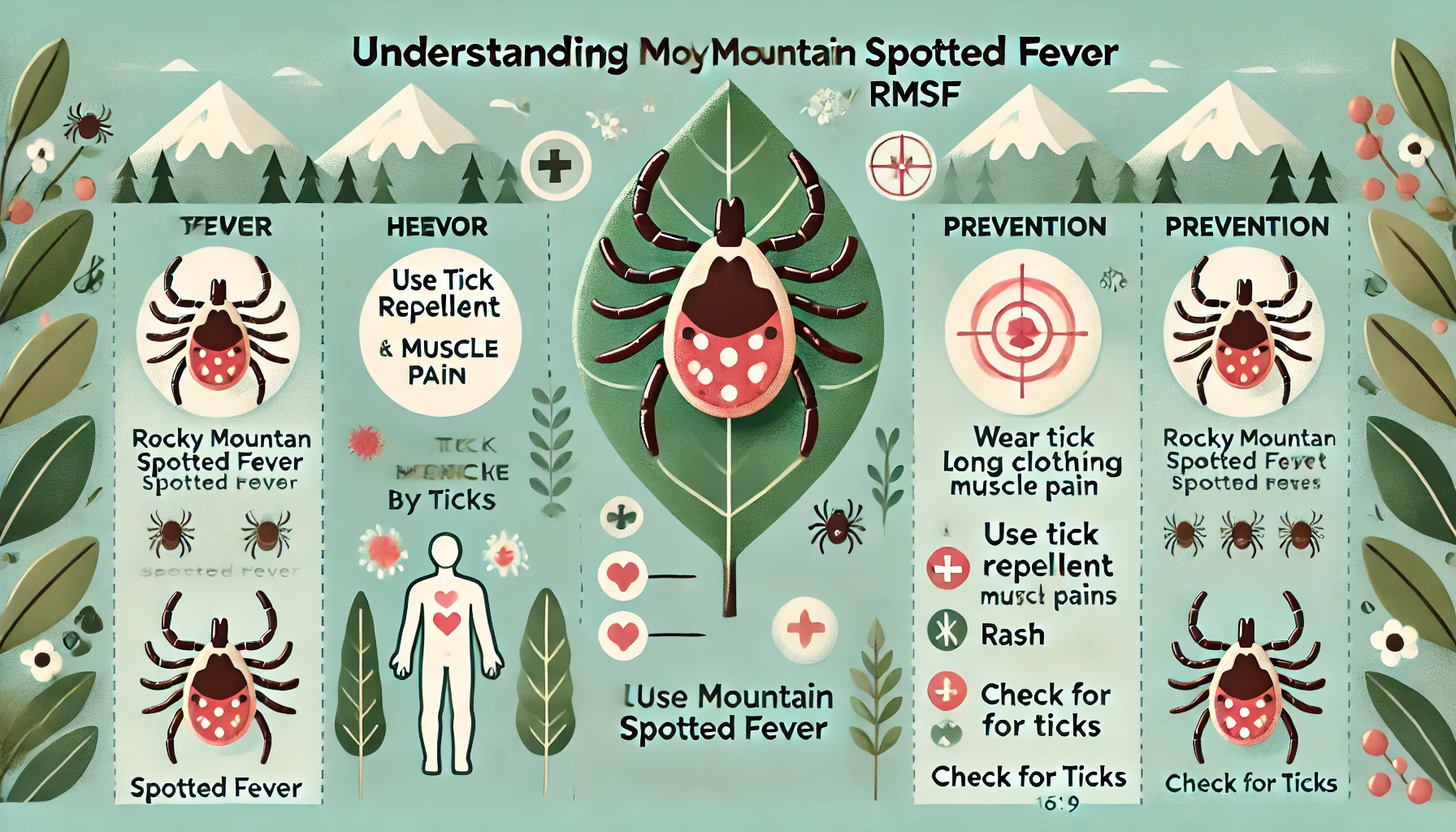 Rocky Mountain Spotted Fever (RMSF)
Despite its name, RMSF occurs nationwide and can be fatal if untreated. Transmitted primarily by the American dog tick, RMSF symptoms include:
Rocky Mountain Spotted Fever (RMSF)
Despite its name, RMSF occurs nationwide and can be fatal if untreated. Transmitted primarily by the American dog tick, RMSF symptoms include:
- Sudden high fever
- Severe headache
- Muscle pain
- A spotted rash that often begins at wrists and ankles
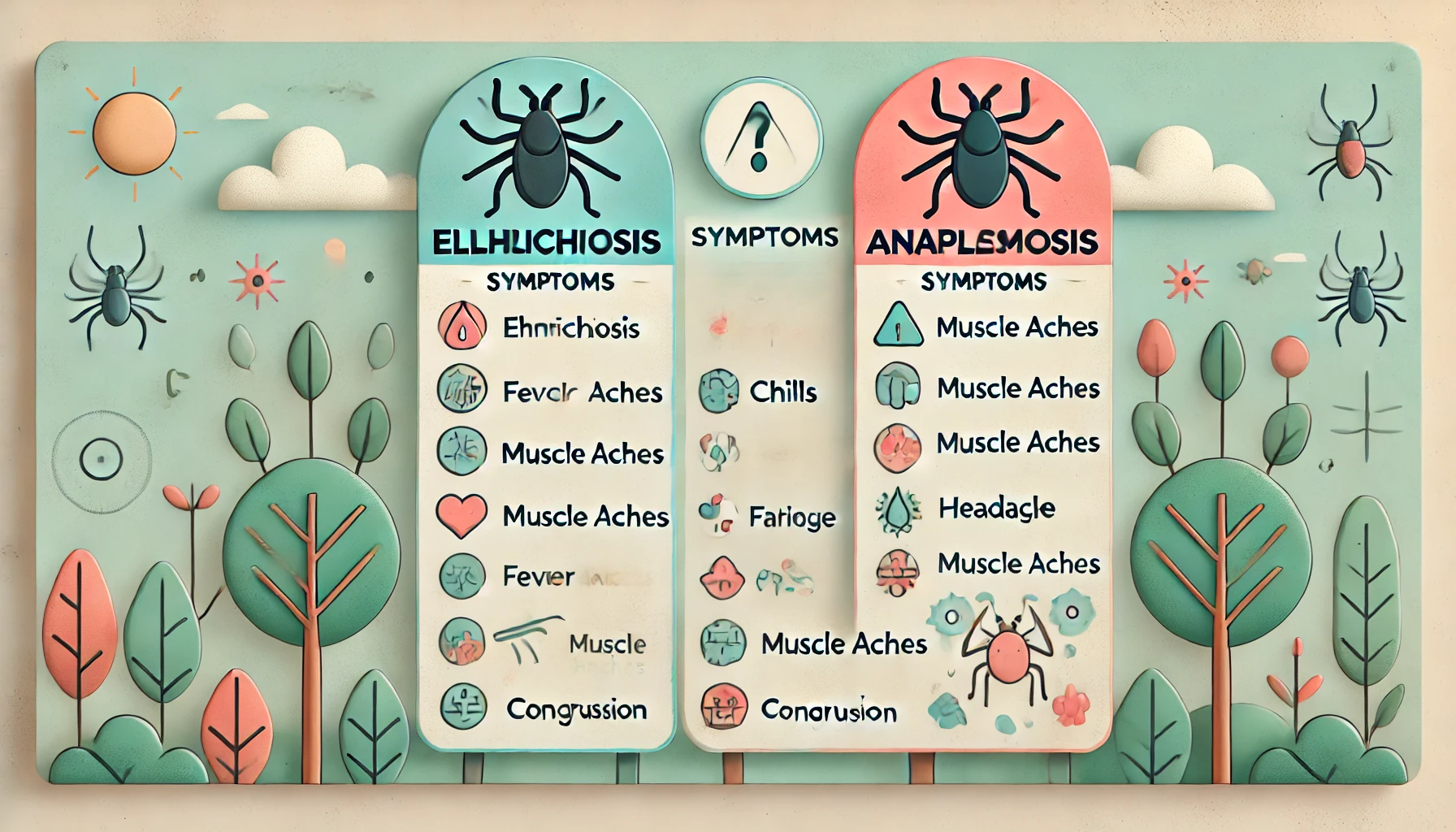 Ehrlichiosis and Anaplasmosis
Spread by the lone star tick and black-legged tick respectively, these infections present flu-like symptoms:
Ehrlichiosis and Anaplasmosis
Spread by the lone star tick and black-legged tick respectively, these infections present flu-like symptoms:
- Fever and chills
- Headaches and muscle aches
- Nausea or vomiting
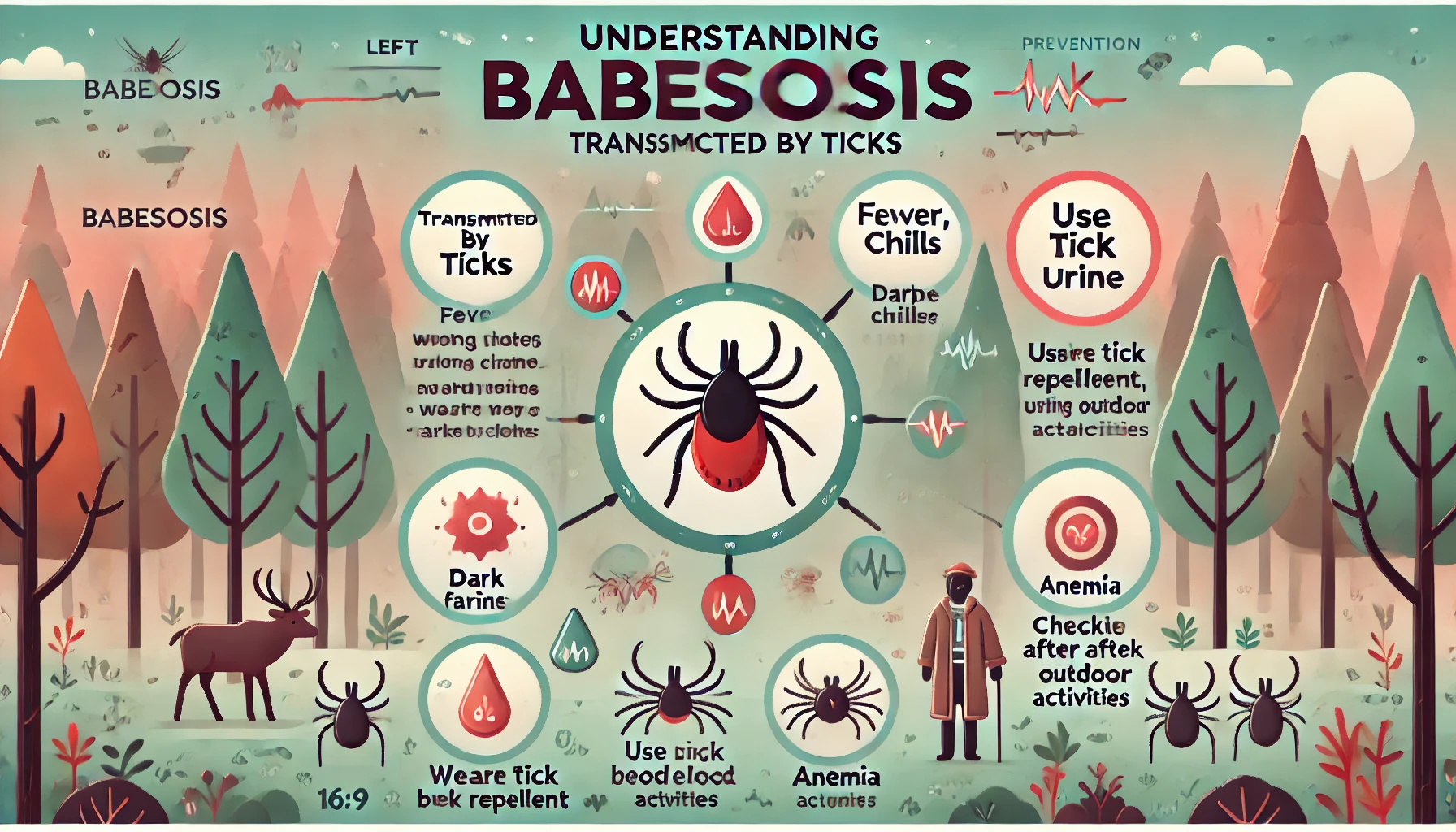 Babesiosis
Babesiosis infects red blood cells and is carried by black-legged ticks. It often causes mild symptoms resembling the flu, but in severe cases, it may lead to anemia and organ damage, especially in people with weakened immune systems or no spleen. Unlike bacterial infections, babesiosis requires specific anti-parasitic medications and careful medical management.
Babesiosis
Babesiosis infects red blood cells and is carried by black-legged ticks. It often causes mild symptoms resembling the flu, but in severe cases, it may lead to anemia and organ damage, especially in people with weakened immune systems or no spleen. Unlike bacterial infections, babesiosis requires specific anti-parasitic medications and careful medical management.
 Powassan Virus
Rare but dangerous, Powassan virus can cause severe neurological problems like encephalitis or meningitis. Transmitted by the same ticks as Lyme disease, symptoms include:
Powassan Virus
Rare but dangerous, Powassan virus can cause severe neurological problems like encephalitis or meningitis. Transmitted by the same ticks as Lyme disease, symptoms include:
- Fever
- Headache
- Confusion or seizures
Recognizing Tick Habitats
Ticks thrive in humid, grassy, wooded, and brush-filled areas. Typical tick hotspots include:- Trails and wooded paths
- Tall grasses and leaf litter in yards
- Brush piles and woodpiles
- Areas near bird feeders or pet resting spots

Prevention: Your Best Defense
- Effective prevention drastically reduces tick bites and the diseases they carry:
-
Dress Appropriately: Wear light-colored clothing with long sleeves and pants tucked into socks to make spotting and avoiding ticks easier.
-
Use Repellents: Apply EPA-approved repellents with DEET on skin and permethrin on clothing. Always follow directions, especially for kids.
-
Stay Vigilant: Check yourself, your kids, and pets for ticks after being outdoors. Showering soon after can also help dislodge ticks.
-
Tick-Proof Your Yard: Keep grass short, remove debris, and create barriers between your lawn and wooded areas. Consider professional treatments if necessary.
-
Protect Pets: Use vet-recommended tick prevention on pets and inspect them after outdoor play to avoid indoor infestations.
What to Do if You Find a Tick
- If you discover a tick attached to your skin, don’t panic—prompt, careful removal dramatically reduces the risk of disease transmission:
-
Use Fine-Tipped Tweezers: Grab the tick close to the skin and avoid crushing or twisting.
-
Pull Straight Upward: Remove the tick in one steady motion to ensure no mouthparts are left behind.
-
Clean Thoroughly: Wash the bite area and your hands with soap and water to prevent infection.
-
Save the Tick: Place it in a sealed bag with alcohol or freeze it in case testing or identification is needed later.

When to Seek Medical Help
While most tick bites don’t lead to illness, monitoring symptoms after a bite is critical. Contact your doctor promptly if you experience:- Unexplained fever or chills
- Rash or swelling around the bite area
- Severe headaches or body aches
- Flu-like symptoms within weeks of a bite
Visit our Species, Control, and DIY Guide sections for additional resources on ticks and ways to tackle a tick infestation.





